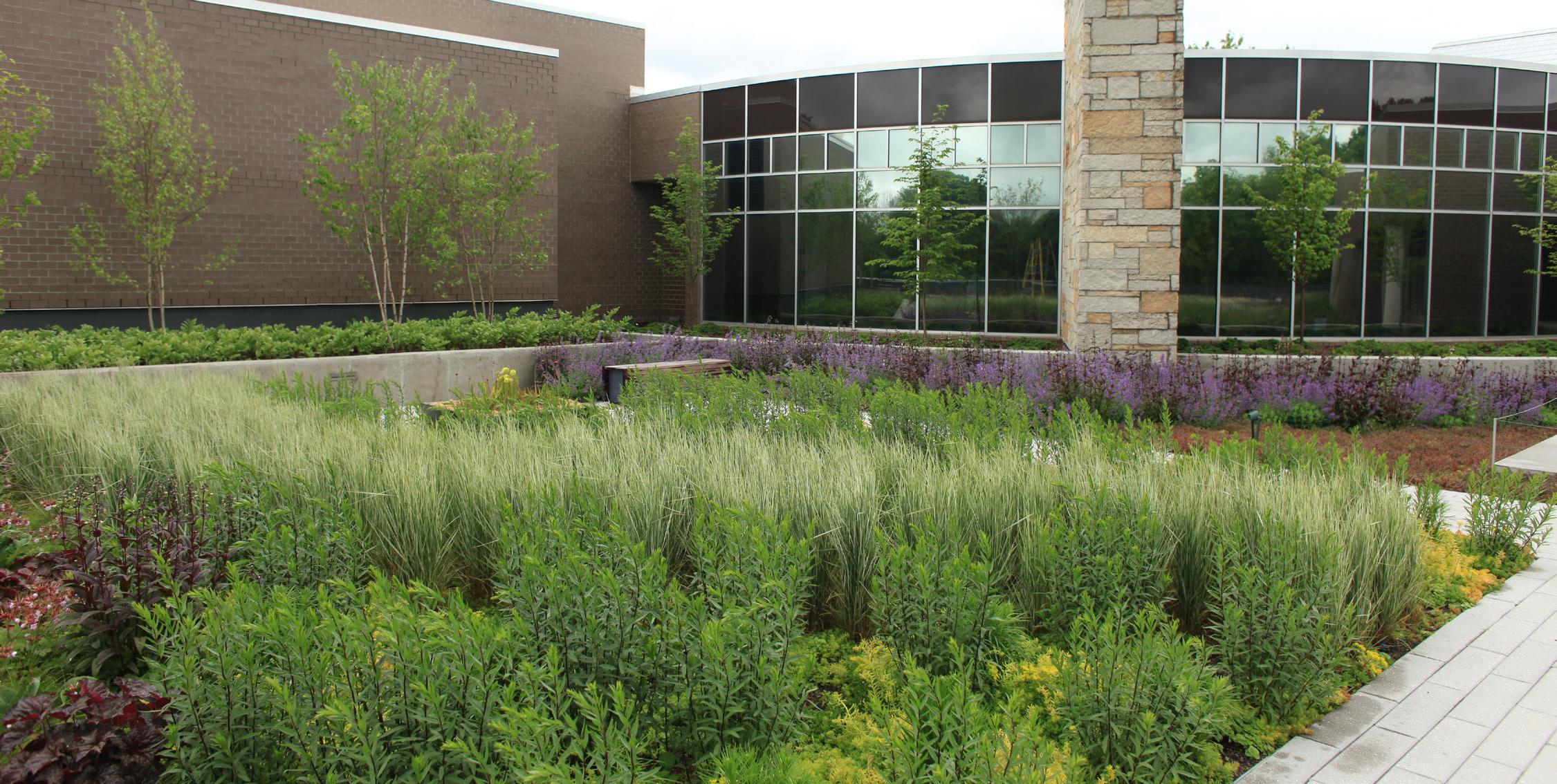John Scholten of LiveRoof: Designing Green Roofs for Water Retention and Rooftop Horticulture
The green roof at the Frederik Meijer Gardens and Sculpture Park was a joint effort among the owners, the architects, and LiveRoof.
T
hey absorb storm water and transform heat traps into flourishing rooftop gardens. They create desirable green spaces in urban buildings where people live and work. What’s not to like about green roofs? Irrigation Leader spoke with John Scholten of LiveRoof about what it takes to design a green roof that thrives. Irrigation Leader: Please tell us about your background and how you came to be in your current position. John Scholten: I got my degree in horticulture and then worked in a research facility for a large flower-seed company in California. I did a lot of traveling and promoting products for the company. When I started my own family, I stepped back from all that traveling and started to look at other opportunities. I moved back to Michigan, where I was born and raised. Fifteen years ago, LiveRoof started here, and I was one of the company’s first employees.
John Scholten: The parent company of LiveRoof is Hortech, a perennial plant nursery that services independent garden centers and landscapers in the Midwest. Our introduction to green roofs came about
28 | IRRIGATION LEADER | May 2022
Irrigation Leader: Why are more builders and architects getting interested in green roofs? Is the appeal mostly aesthetic, or is it to retain water? irrigationleadermagazine.com
PHOTOS COURTESY OF LIVEROOF.
Irrigation Leader: Please introduce LiveRoof.
20 years ago, when Ford Motor Company put a green roof on its River Rouge truck plant. It purchased plants from us and consulted with us on plant selection. After that, we started increasing our plant selections for green roofs and supplying plugs for built-in-place green roofs. Then, a landscape contractor in Chicago that was installing green roofs asked our owner, David McKenzie, if there was a better way of creating green roofs. Mr. McKenzie spent a day with the contractor to see how it was doing built-inplace and other tray systems. On his drive back, he figured out in his head how LiveRoof would work. Once a green roof is established, it’s easy to take care of; it’s the establishment that’s the hard part. The roof environment is too harsh to grow plants in the summertime. A black membrane roof can have temperatures of 130 degrees, and once plants get above 90 degrees, they start to shut down. We needed to grow the green roof at a nursery and then bring it to the roof when the plants were fully established. That was the idea behind LiveRoof. We worked on some patents for our module design, which is different from other module systems on the market.









